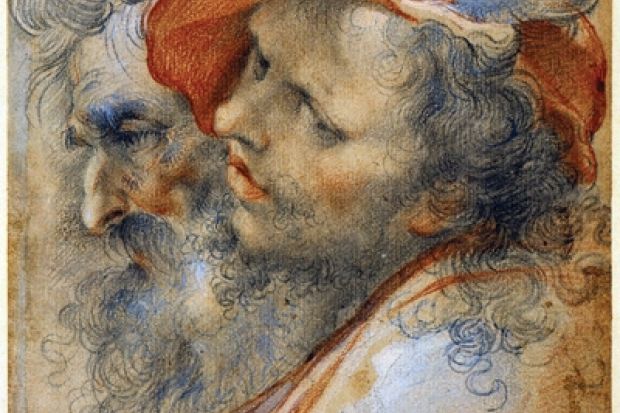Italian Etchings: The Draughtsman's Print and other exhibitions
Fitzwilliam Museum, Cambridge
Etching developed as a printing technique in the 16th century, and this exhibition (which runs until 29 August) brings together 35 works from the Fitzwilliam Museum's collection spanning that and the following two centuries.
Here are scenes of ecstatic saints; Roman triumphs; breast-feeding Madonnas; the philosopher Democritus meditating amid a pile of bones and damaged masonry; a garden of love where Cupids shoot down arrows on caressing couples; and even an "Allegory in Honour of Pope Innocent X", in which the wolf of Avarice is barking at the cowering figure of Pusillanimity.
As portrayed by Tiepolo, the Holy Family's flight into Egypt takes on a rather local flavour, with an angel seeming to punt them along the Cam. Like many of these etchings, this reveals an absolute mastery of technique in the subtlety of its lighting, landscape and emotional effects.
Today's print-makers may be equally accomplished, but they often privilege in-your-face impact over subtlety and decorum. A parallel exhibition at the Fitzwilliam (until 8 May) draws on its contemporary print collection under the title Afterlife. Mat Collishaw was determined to make his house bug-free before the birth of his son. To produce Insecticide, he took the bodies of insects he had killed and scanned them into his computer; enlarged and distorted, their deep blues and sharp oranges and yellows are strangely eerie against a black background.
Marc Quinn's Garden2 creates equally disquieting images of imaginary gardens, in over-saturated colour, which bring close together lush and slightly obscene-looking orchids from all over the world.
Others use the medium for more overtly political ends. Paul Coldwell was disquieted by the claim that the bombing of Baghdad had been so accurate that it had led to no civilian casualties. He therefore used out-of-focus photographs of the smoking city and gave them a human touch with squiggles of a coat hanger, a bunch of flowers and a pair of spectacles. Hughie O'Donoghue performed similar transformations on the postcards of Mussolini and his henchmen strung up for display in an Esso petrol station at the end of the Second World War.
Both these exhibitions also function as curtain-raisers for a much larger exhibition at the Fitzwilliam, titled Italian Drawings: Highlights from the Collection (8 March-10 July), which starts in the 1430s and continues until the time of Modigliani. Among the featured artists are Michelangelo, Leonardo and Raphael, Titian and Tintoretto. Also on display are sketchbooks by Carlo Dolci - which he used to teach his daughter Agnes to draw and include some of her own work - and Stefano della Bella.
The exhibition will be accompanied by the publication of David Scrase's new catalogue of Italian Drawings at The Fitzwilliam Museum, Cambridge (Cambridge University Press), which includes close to 1,400 colour illustrations.
